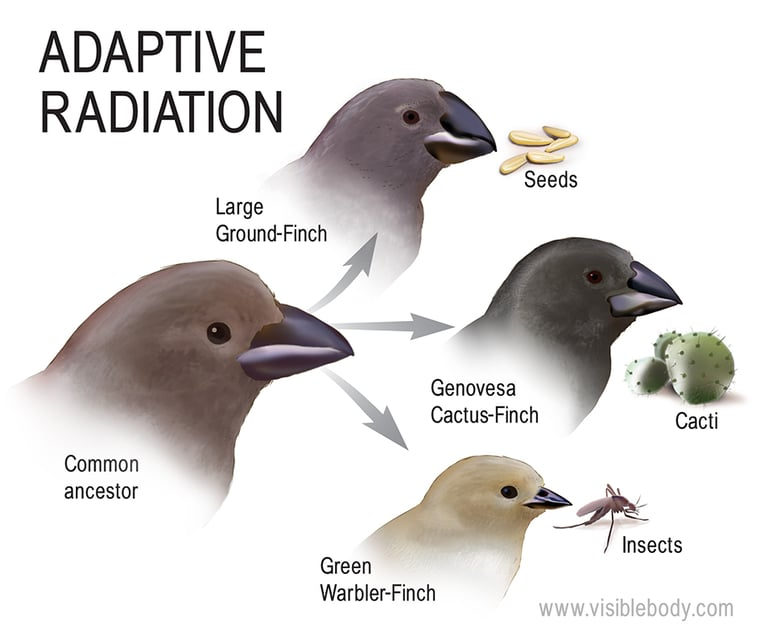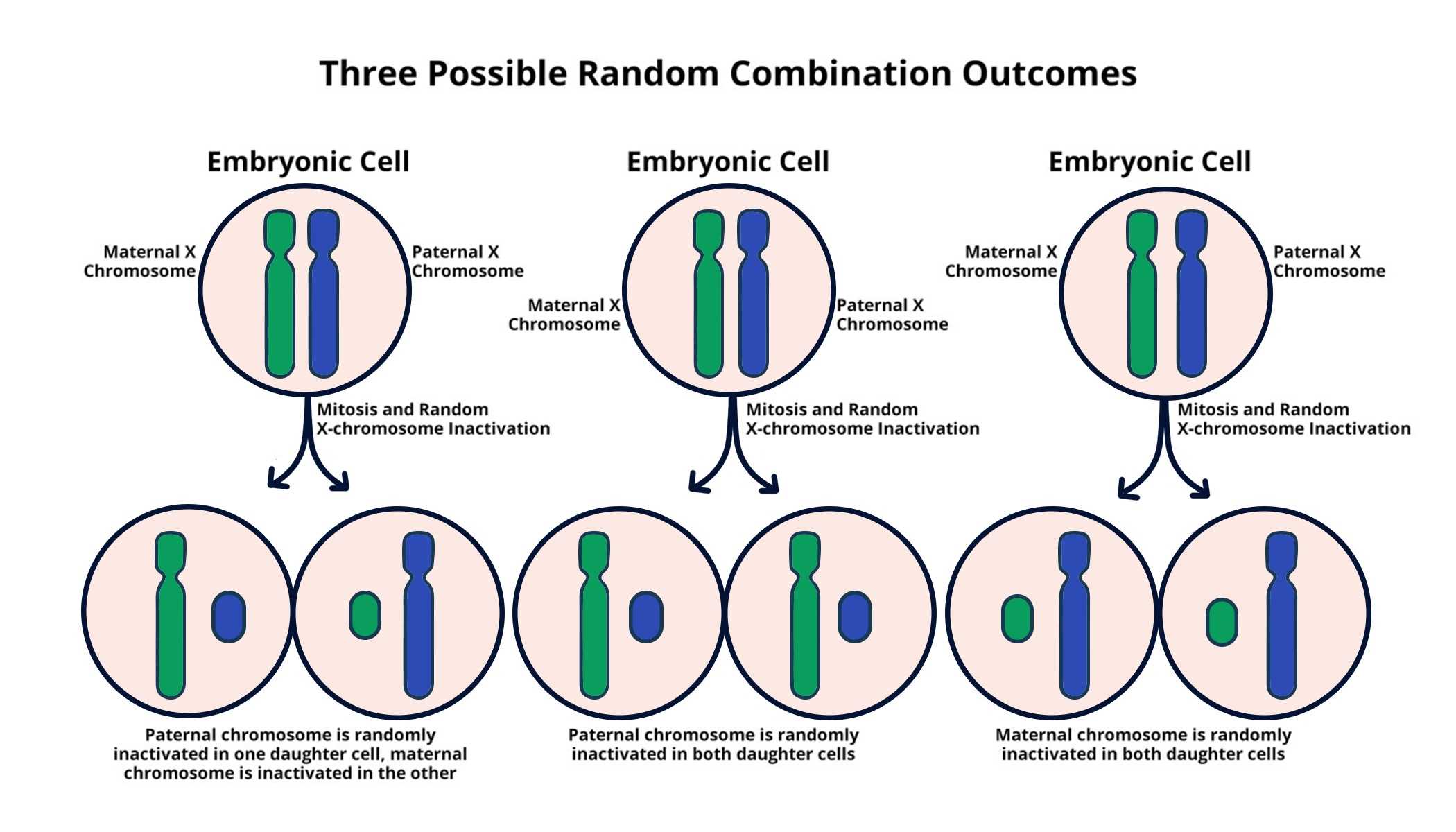
House Finch Genetic Adaptation: Insights from Pangenomic Study
House finch genetic adaptation is a fascinating topic that unveils the intricate relationship between genetics and evolution in urban environments. Recent studies, particularly a groundbreaking pangenomic research, reveal how these small birds have developed resilience against diseases through significant genetic changes. These adaptations not only provide insight into the evolutionary biology of the house finch but also highlight the mechanisms underlying disease resistance in wildlife. By analyzing the genetic composition of various finch populations, researchers have uncovered large-scale structural variations in their DNA that play a critical role in their survival. Such discoveries pave the way for a deeper understanding of how genetic adaptation can influence a species’ ability to cope with pathogens in rapidly changing environments.
Exploring the genetic resilience of house finches offers a unique perspective on how common birds adapt to their surroundings through evolutionary processes. This small avian species serves as an important model for studying the genetic factors that contribute to resistance against diseases. Through advanced sequencing techniques, researchers are able to identify significant structural changes in the finch’s DNA, shedding light on the broader dynamics of evolutionary adaptation. The findings present valuable insights into how wildlife responds to environmental pressures, particularly in the face of infectious diseases. By examining house finch genetic adaptations, scientists can glean clues about the ongoing evolutionary battles between hosts and pathogens, with implications that extend to many species, including humans.
Understanding Genetic Adaptation Through House Finches
Genetic adaptation is a fascinating phenomenon that allows species to thrive in their respective environments. In the case of the house finch, significant findings from recent studies illuminate how these adaptations occur at a molecular level. The groundbreaking research led by Bohao Fang uncovered a notable DNA inversion that plays a crucial role in disease resistance, showcasing the house finch as an exemplary model in evolutionary biology. By utilizing advanced pangenomic techniques, researchers were able to analyze broad genetic variations rather than focusing on isolated genes, providing deeper insight into how these birds have adapted over time.
This pangenomic study not only sheds light on the house finch’s ability to resist infections, but it also highlights a bigger picture of adaptation in wildlife. The extensive genetic repository maintained by the Museum of Comparative Zoology allowed researchers to track genetic changes over decades, making the study particularly robust. Such longitudinal studies are significant as they reveal how populations can evolve and adapt in real-time, especially in response to new diseases entering their ecosystems.
The Impact of Pangenomic Studies in Evolutionary Biology
Pangenomic studies represent a revolutionary shift in evolutionary biology, enabling researchers to analyze the full spectrum of genetic diversity within a species. This method is instrumental in uncovering hidden genetic traits that single-reference genome studies might overlook. Specifically, the house finch research illustrates how comprehensive genetic data can reveal structural variations that empower species to adapt to environmental challenges, such as emerging diseases. By exploring these large genomic datasets, scientists can better understand the ‘heritable genetic mechanisms’ underpinning resilience and adaptation.
Moreover, as highlighted by Fang’s findings, pangenomic studies may help identify genetic pathways that contribute to disease resistance, offering valuable insights not only into avian species but also into broader ecological impacts. Researchers like Scott V. Edwards emphasize that these innovative approaches can lead to groundbreaking discoveries in population genomics. Such advances could ultimately shape how we understand disease management and evolutionary responses across different species, including humans.
House Finch: A Model for Studying Disease Resistance
The house finch serves as an outstanding model organism for understanding the dynamics of disease resistance within natural populations. The recent study illustrates how house finches have developed genetic adaptations to combat pathogens, notably a bacterial infection that caused widespread conjunctivitis among the population. This resilience is not merely anecdotal; it is grounded in concrete genetic evidence revealing how specific DNA inversions have conferred a survival advantage over time. These adaptations demonstrate the fascinating interplay between genetic variation and epidemiological pressures.
Furthermore, the implications of such studies extend to the field of conservation biology and public health. By examining how house finches have adapted to prevent disease outbreaks, we can gather insights applicable to other species, including humans. Researchers can draw parallels between avian genetic adaptations and human evolutionary responses to infectious diseases. Understanding these genetic defenses could inform vaccine development and other health strategies, emphasizing the broader relevance of the house finch in evolutionary studies.
Technological Advances in Genetic Research
Recent advancements in technology have profoundly impacted the way researchers conduct genetic studies, particularly in evolutionary biology. Long-read sequencing technologies, as employed in the house finch pangenomic study, have allowed for a nuanced understanding of genetic structures and variations. These advancements enable scientists to capture significant large-scale structural variants that traditional methods might miss, ultimately leading to a more comprehensive understanding of genetic adaptations. By leveraging these innovative techniques, researchers like Bohao Fang are paving the way for exciting new discoveries in the field.
Increased access to sophisticated genetic tools not only enhances data accuracy but also facilitates broader studies across varied species. This approach underscores the importance of integrating technologies into biological research, as it broadens our understanding of how species, such as the house finch, adapt and survive in the face of environmental challenges. The ability to analyze genetic material from diverse populations further enriches our knowledge of evolutionary processes, providing a more holistic view of the mechanisms driving adaptation.
The Role of Evolutionary Biology in Disease Research
Evolutionary biology plays a crucial role in understanding how organisms, including the house finch, adapt to pathogens over time. As emerging diseases pose threats to wildlife and human populations, the insights gained from studying genetic adaptations become increasingly vital. By examining how the house finch has modified its genetic makeup in response to diseases, researchers illustrate the evolutionary pressures at play. This field of study provides the framework for comprehending both historical and contemporary challenges faced by species as they navigate a changing world.
Additionally, incorporating evolutionary principles into disease research not only helps us comprehend the mechanisms of resistance but also informs conservation strategies and public health initiatives. Understanding how certain species genetically adapt can aid in predicting future patterns of disease resistance or susceptibility among other organisms, including humans. Thus, evolutionary biology not only elucidates past adaptations but also provides valuable insights into future survival strategies in an era of rapid environmental change.
Longitudinal Studies: The Key to Understanding Evolution
Longitudinal studies are integral to comprehending evolutionary adaptations, particularly evident in the research surrounding house finches. By observing genetic material over time, researchers can detect shifts in genetic dynamics corresponding to changes in pathogen prevalence. This methodology offers a unique perspective on the evolutionary arms race between hosts and their diseases, showcasing how species adapt to survive in their environments. The significance of long-term data cannot be overstated, as it reveals the continuous nature of evolution and adaptation.
Moreover, such studies foster a deeper understanding of genetic resilience, which can inform efforts to manage wildlife populations and public health. By analyzing historical genetic data alongside current observations, researchers can identify effective strategies for conservation and disease management. The house finch’s experience serves as a template for exploring adaptive mechanisms in others, highlighting the critical need for ongoing longitudinal research in both ecological and medical fields.
Genetic Variation and Its Impact on Species Survival
Genetic variation is central to the survival of species as it enhances adaptive capacity in changing environments. The house finch exemplifies how genetic diversity directly influences disease resistance, allowing populations to thrive despite the emergence of novel pathogens. The recent pangenomic study highlighted that specific structural variations in the house finch genome correlate with improved resilience to infections, a finding that underscores the importance of maintaining genetic diversity within populations. This genetic adaptability plays a pivotal role in the ongoing survival of species facing ecological pressures.
Furthermore, understanding the role of genetic variation in survival has far-reaching implications for biodiversity conservation. As environmental pressures increase due to climate change and habitat loss, species with greater genetic diversity may be better equipped to adapt to these changes. The case of the house finch illustrates the necessity of preserving genetic variations within populations to ensure their long-term resilience against diseases and other threats. Continued research in this area is vital for conserving biodiversity and safeguarding species against the inevitable challenges posed by a shifting environment.
Challenges and Future Directions in Genetic Research
While recent studies, such as the one conducted on house finches, have made significant strides in understanding genetic adaptation, challenges remain in the field of evolutionary biology. The complexity of genetic interactions and environmental variables complicates the ability to draw definitive conclusions about adaptation. Additionally, as researchers uncover more about the pangenome and structural variations, they must also address the ethical considerations associated with genetic studies, particularly in terms of conservation and animal welfare.
Looking ahead, future research must focus on developing more refined techniques and methodologies to unravel the intricacies of genetic adaptations across diverse species. By collaborating across disciplines and employing advanced genetic technologies, scientists can gain deeper insights into evolutionary processes. The house finch’s ongoing journey of adaptation serves as a critical reminder of nature’s resilience, and further exploration promises to yield valuable lessons for both biodiversity conservation and human health.
Frequently Asked Questions
What is genetic adaptation in house finches?
Genetic adaptation in house finches refers to the evolutionary process where these birds undergo changes in their DNA to better survive and thrive in their environments. A recent pangenomic study has revealed significant DNA inversions that enhance their resistance to specific diseases, showcasing how genetic adaptation can occur in response to environmental pressures.
How do house finches demonstrate evolutionary biology through genetic adaptation?
House finches are a prime example of evolutionary biology as they exhibit genetic adaptations that enable them to cope with diseases and environmental changes. Their ability to resist infections, particularly from pathogens like the one causing conjunctivitis, highlights the dynamic nature of genetic adaptation in natural populations.
What role does pangenomic study play in understanding house finch genetic adaptation?
Pangenomic studies enhance our understanding of house finch genetic adaptation by examining a broader range of genetic data from multiple individuals. This approach allows scientists to identify significant structural variations in the DNA, such as the major inversion found in house finches that contributes to their disease resistance.
What disease resistance mechanisms have been discovered in house finches?
Recent research has uncovered specific genetic adaptations in house finches that provide them with resistance to certain diseases. The discovery of a DNA inversion through pangenomic analysis suggests that these birds have evolved mechanisms to combat infections, illustrating a remarkable example of how genetic adaptation can lead to survival in changing environments.
How can studying house finch genetic adaptation inform human disease resistance?
Research on house finch genetic adaptation offers insights into how animals develop resistance to infectious diseases, which may parallel mechanisms in humans. Understanding the genetic variations that enable house finches to fight pathogens can help scientists explore potential pathways for enhancing disease resistance in other species, including humans.
In what ways does the house finch serve as a model for studying genetic adaptation?
The house finch serves as an excellent model for studying genetic adaptation due to its well-documented response to diseases like conjunctivitis. By analyzing historical genetic data through pangenomic studies, researchers can track evolutionary changes and understand the mechanisms behind disease resistance, providing valuable lessons in evolutionary biology.
What are the implications of Bohao Fang’s research on house finch genetic adaptation?
Bohao Fang’s research on house finch genetic adaptation has significant implications for evolutionary biology and disease ecology. It reveals how structural variations in DNA contribute to adaptive evolution, enhancing our understanding of how species respond to pathogens, which could inform conservation efforts and public health strategies.
| Key Concepts | Details |
|---|---|
| Genetic Adaptation | House finch genetic adaptation involves evolutionary responses to diseases, demonstrated through a significant DNA inversion. |
| Research Methodology | A pangenomic study utilized advanced sequencing techniques, analyzing genetic information from multiple specimens to understand adaptation better. |
| Disease Resistance | The study illustrates how house finches developed immunity to conjunctivitis-causing bacteria, highlighting the role of structural DNA variations in disease resilience. |
| Historical Data | DNA samples from as early as 2000 were analyzed, providing insight into how house finches evolved over time in response to diseases. |
| Implications for Future Research | Findings may influence studies on other species and help understand human responses to infectious diseases. |
Summary
House finch genetic adaptation offers a fascinating insight into how species can evolve to combat diseases over time. This study highlights the importance of innovative research methodologies, such as pangenomic analysis, in uncovering the genetic mechanisms behind disease resistance. By understanding the DNA changes that have enabled the house finch to effectively respond to infections, researchers can gain valuable perspectives on evolutionary processes not only in birds but potentially across other species, including humans.



